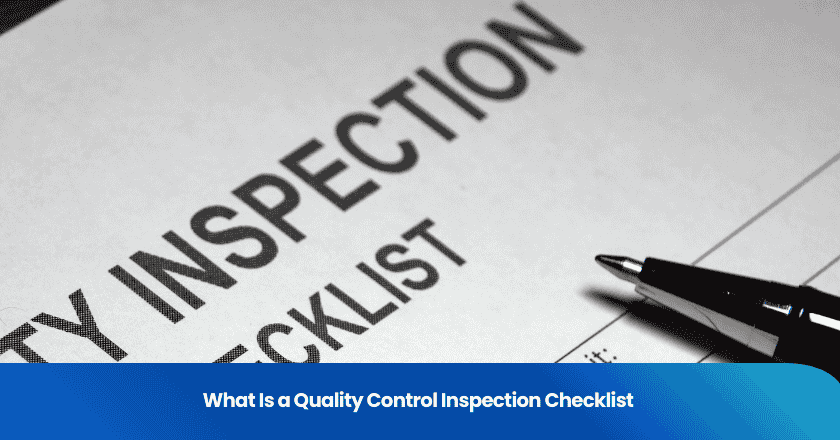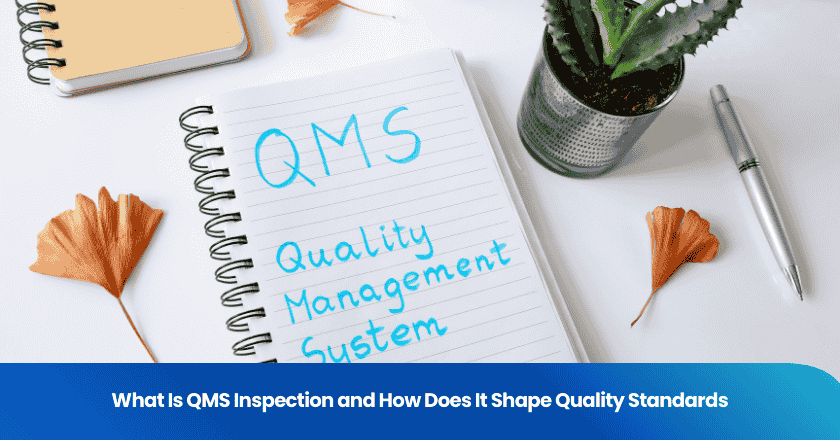
You encounter "aql meaning in quality" when you assess the maximum number of defects allowed in a batch before rejecting it. This standard shapes your approach to quality control and helps you set clear expectations for suppliers and production teams. Recent studies indicate that traditional AQL methods often lack real-time visibility and slow response to anomalies, while predictive systems improve defect prevention and first-pass yield.
Key Takeaways
- AQL stands for Acceptable Quality Level, which defines the maximum number of defects allowed in a batch before rejection.
- Use AQL to set clear quality standards for suppliers, ensuring consistent product quality and customer satisfaction.
- Categorize defects as minor, major, or critical to streamline inspections and focus on what truly impacts product usability.
- Regularly train your team on AQL procedures to ensure accurate inspections and effective quality control.
- Monitor and adjust your AQL parameters to adapt to changes in production and maintain high-quality standards.
AQL Meaning in Quality
Definition of Acceptable Quality Level
You encounter the term "aql meaning in quality" when you need to set clear standards for product inspection. The acceptable quality level, as defined by ISO 2859, represents the worst tolerable process average when you submit a continuing series of lots for acceptance sampling. This definition helps you establish a baseline for what you consider an acceptable number of defects in a batch. You use aql to determine the maximum defect rate that your customer will accept before shipment. This approach allows you to balance quality expectations with the realities of manufacturing and inspection.
When you compare aql to other quality control metrics, you notice key differences:
- Aql sets the maximum defect rate acceptable to your customer before shipment.
- LTPD (Lot Tolerance Percent Defective) identifies the defect rate at which a sampling plan will typically reject the product, with a higher rejection threshold.
- AOQL (Average Outgoing Quality Level) serves as another metric, depending on your industry and specific inspection requirements.
You rely on aql meaning in quality to guide your inspection process and communicate clear standards to your suppliers and production teams.
Role in Quality Control
You use aql as a statistical concept in sampling plans for product inspections. This method determines your sample sizes and acceptance criteria, giving you a clear standard for judging batch quality. You encourage your suppliers to maintain process averages better than the required threshold, which improves overall product consistency.
Aql plays several important roles in your quality control strategy.
The following table summarizes these functions:
| Role of AQL | Description |
|---|---|
| Risk Management Tool | Sets acceptable defect levels to balance quality expectations with production realities. |
| Cost-Efficiency Measure | Allows effective quality control without 100% inspection, saving time and resources. |
| Supplier Management Standard | Provides a standardized way to evaluate and communicate quality expectations with suppliers. |
| Improved Product Consistency | Helps maintain uniform product quality across production runs. |
| Enhanced Customer Satisfaction | Consistently meeting quality standards leads to higher customer satisfaction and loyalty. |
| Reduced Waste | Catches quality issues early, minimizing scrap and rework. |
You apply aql meaning in quality across many sectors. For example, you inspect large quantities of apparel, consumer electronics, toys, and household goods using aql. This method allows you to assure quality without exhaustive inspection of every item.
- You use aql to set clear expectations for suppliers.
- You rely on aql to maintain consistent product quality.
- You apply aql to minimize waste and improve customer satisfaction.
You integrate aql into your quality control system to ensure that your products meet both your standards and your customers' expectations.
Importance of Acceptable Quality Level
Product Quality Impact
You rely on the acceptable quality level to set clear standards for product inspections. This approach allows you to categorize defects as minor, major, or critical, which helps you maintain consistent product quality across batches. In garment manufacturing, you use this system to determine which defects are tolerable and which require immediate action. You avoid exhaustive inspections by focusing on defect types and their impact on usability and safety.
You see the benefits of this framework in industries such as apparel, electronics, and consumer goods. By applying quality control procedures based on defect categories, you improve product consistency and reduce the risk of unsafe items reaching customers. You also use acceptance sampling to assess product quality, integrating inspection data with your quality control systems. Regular audits and ongoing evaluation help you identify patterns and root causes, driving continuous improvement.
- You categorize defects to streamline inspections.
- You use inspection data to benchmark performance and guide corrective actions.
- You focus on customer feedback to refine your quality control process.
Risk and Cost Management
You use the acceptable quality level to balance inspection efficiency with product quality assurance. This method helps you manage risks associated with defects while optimizing operational costs. You define maximum permissible defects for each batch, which allows you to maintain product integrity without excessive inspection expenses.
You streamline your inspection process by setting benchmarks for defect levels. This approach reduces costs linked to unnecessary inspections and helps you optimize your supply chain. You maintain product quality while controlling expenses, which supports your business goals.
- You balance quality assurance with cost-effectiveness.
- You optimize operational efficiency by defining defect thresholds.
- You use structured sampling to manage risk and maintain high standards.
Steps to Apply AQL
Applying aql in your quality control process requires a systematic approach. You must follow each step to ensure your product inspection meets industry quality standards and customer expectations. Below, you will find detailed guidance for each stage.
Identify Lot Size
You start by determining the total number of units in the batch you plan to inspect. This step is crucial because the lot size directly affects your aql sampling size and the reliability of your results. Larger lots require larger sample sizes to maintain statistical validity, but the proportion of units inspected decreases as the lot size grows.
Tip: Always verify your batch count before proceeding. Accurate lot size identification ensures your aql sampling size reflects the true scope of your inspection.
Steps to identify lot size:
1. Identify the batch size by counting all units in the production lot.
2. Select the acceptable quality level based on your industry and customer requirements.
3. Refer to the aql table to find the sample size that matches your batch size and chosen aql.
4. Determine the sample size for your inspection.
5. Conduct the review using the specified sample size.
6. Make decisions based on the inspection results.
Select Inspection Level
You must choose the appropriate inspection level for your product inspection. The inspection level determines how many units you will inspect and the rigor of your assessment. Your choice depends on factors such as lot size, cost, product stability, and the nature of the tests.
| Criteria | Description |
|---|---|
| Lot Size | Number of units in the batch. |
| Inspection Levels | Special (S-1 to S-4) and General (I to III) levels. |
| Cost Considerations | Balance between inspection cost and risk of non-conforming batches. |
| Product Quality Stability | Use higher levels for unstable quality, lower for stable quality. |
| Nature of Tests | Lower levels for destructive tests, higher for non-destructive tests. |
| Historical Data | Higher levels for trial products with little historical data. |
You typically use General Level II for most product inspection scenarios. If you work with high-value items or suppliers with inconsistent quality, you may select Level III for stricter control. For costly or destructive testing, Special Levels S-1 to S-4 help minimize waste.
| Inspection Level | Description | Sample Size | Risk of Missing Defects |
|---|---|---|---|
| Level I | Most lenient, for high-quality suppliers | Smallest | Higher risk |
| Level II | Default, balances thoroughness and cost | Moderate | Moderate risk |
| Level III | Strictest, for low-quality or high-value items | Largest | Lower risk |
| S-1 to S-4 | Special, for costly or destructive tests | Small to larger | Varies |
Use AQL Chart
You use the aql chart to determine your sample size and acceptance criteria. The chart links your lot size and inspection level to a sample size code letter, which then guides you to the correct sample size and defect thresholds.
How to use an aql chart:
1. Determine your lot size and inspection level to find the sample size code letter.
2. Use the code letter to locate the sample size and acceptance/rejection numbers for your chosen aql.
3. Identify the acceptance quality limit, which is the maximum number of defective items allowed for batch acceptance.
AQL charts are widely used in consumer goods, apparel, and electronics. You can access these charts in industry standards or use online calculators to simplify your calculations.
Assess Defects
During inspection, you evaluate each unit in your sample against predefined quality standards. You classify defective items as minor, major, or critical, based on their impact on product usability and safety.
| Defect Type | Description | Examples |
|---|---|---|
| Minor Defect | Slight deviation; still saleable | Small scratch on monitor; slight color variance |
| Major Defect | Unsaleable or likely to be returned | Scratch on front; incorrect packaging color |
| Critical Defect | Could cause injury or death; fails inspection | Splintered furniture; overheating battery |
You document all findings during product inspection. You keep detailed records of defective items and their classifications. This documentation supports future improvements and helps you maintain consistent quality standards.
Note: Always align your defect classifications with your industry’s acceptable quality level and customer expectations.
Interpret Acceptance Quality Limit
After inspection, you compare the number of defective items found to the acceptance quality limit specified in your aql chart. If the number of defects is at or below the acceptance number, you accept the batch. If it exceeds the limit, you reject the batch.
You must document your decisions and report the results to relevant stakeholders. This step ensures transparency and supports continuous improvement in your quality control process.
Before implementing aql, you should conduct a measurement system analysis (MSA). This analysis verifies that your inspection methods are reliable and accurate. MSA helps you avoid errors in defect detection and ensures your product inspection results reflect true product quality.
Pro Tip: Regularly review your aql sampling size and acceptance quality limit to adapt to changing production conditions and customer requirements.
You complete the process by making a final decision based on your findings. You accept or reject the batch, document the outcome, and use the data to refine your quality standards and inspection procedures.
Practical AQL Implementation
Team Training
You need to train your team to apply aql effectively in your quality control process. Start by explaining the purpose of aql and how it shapes your product inspection strategy. Use real-world examples to show how aql helps you decide when to accept or reject batches based on the number of defective items found during inspection.
- Teach your team to identify different types of defective items during product inspection.
- Provide hands-on sessions where team members practice using aql charts and sampling plans.
- Emphasize the importance of consistent inspection methods to ensure reliable results.
Tip: Regular refresher training keeps your team updated on changes in aql standards and inspection techniques.
Integrate with Quality Systems
You can integrate aql into your existing quality management systems by using structured frameworks and digital solutions. This integration helps you set up inspection schedules based on the severity of potential issues and ensures compliance with regulatory requirements.
- Use customizable workflows to tailor your sampling plans for different products.
- Specify aql and LTPD values in your system to ensure incoming materials meet your standards.
- Support your inspection process with digital forms that capture data on defective items and product inspection outcomes.
You improve your quality control by making aql part of your digital workflow. This approach streamlines inspection, reduces errors, and helps you track trends in defective items over time.
Monitor and Adjust
You must monitor your aql parameters and adjust them as your production environment changes. Regular evaluation ensures your sampling plans remain relevant and effective. Keep detailed documentation of your inspection procedures and product inspection results. This record-keeping supports future analysis and helps you comply with industry standards.
- Review your aql procedures regularly to confirm their effectiveness.
- Update your standards to reflect new regulations and customer needs.
You maintain high-quality standards by adjusting your aql approach as needed. This proactive stance helps you catch defective items early and improve your overall product inspection process.
Common AQL Challenges
Misunderstandings
You may encounter several misunderstandings when you apply aql in your quality control process. Many professionals believe aql represents the highest possible quality, but it actually sets a threshold for tolerable defects. You need to recognize these common misconceptions to use aql effectively:
1. Aql is not the highest quality level but a threshold for tolerable defects.
2. A lower aql does not guarantee better quality products; it must align with production capabilities.
3. Aql standards vary by industry and are not fixed across all sectors.
4. Aql applies to samples, not every unit in a batch.
5. You should use aql alongside other quality management tools.
You improve your inspection results when you address these misunderstandings early. Clear communication about what aql means helps your team avoid costly mistakes and ensures your inspection process remains effective.
Resistance to Change
You may face resistance when you introduce aql into your inspection routines. Team members often feel uncertain about new processes. You can overcome this resistance by using proven strategies:
- Communicate clearly and honestly about the necessity and benefits of aql.
- Involve your team in the change process to foster ownership.
- Provide training and support to address technical and emotional concerns.
- Introduce changes gradually so your team can adjust.
- Empower local champions to promote aql adoption and build trust.
You build confidence in your inspection process when you use these strategies. Leadership support and transparent communication help your team embrace aql and improve overall quality.
Consistency Issues
You may struggle with consistency when you implement aql across different teams or shifts. Inconsistent application of aql can lead to unreliable inspection outcomes and undermine your quality control efforts. You need to standardize your inspection procedures and provide regular training. You should document your aql processes and monitor inspection results to identify gaps. When you address consistency issues, you ensure that every inspection meets your quality standards and supports your business goals.
You strengthen your quality management by mastering the steps to determine and apply aql meaning in quality. You identify lot size, select inspection levels, use AQL charts, assess defects, and interpret results. Understanding aql meaning in quality leads to informed decisions and better product outcomes.
- You gain clarity in sampling and inspection.
- Tailored inspection improves customer satisfaction.
- Continuous improvement maintains high standards.
- Real-world success stories show measurable benefits.
Review your current process and embrace AQL for consistent quality and business growth.
FAQ
What does AQL stand for in quality control?
AQL stands for Acceptable Quality Level. You use it to define the maximum number of defects allowed in a batch before you reject it during inspection.
How do you choose the right AQL level?
You select the AQL level based on product type, customer requirements, and industry standards. Lower AQL values mean stricter quality control. Always match your choice to your risk tolerance and product safety needs.
Can you apply AQL to every industry?
You can apply AQL in most industries, including electronics, apparel, and consumer goods. Some sectors, like medical devices, require stricter AQL levels due to higher safety risks.
What happens if a batch fails the AQL inspection?
If your batch fails the AQL inspection, you reject it or request corrective actions. You may re-inspect after rework. This process helps you maintain consistent product quality.
Why should you train your team on AQL procedures?
You should train your team so everyone understands defect categories, sampling plans, and inspection methods. Proper training ensures accurate inspections and reliable quality control results.
Grow your business with TradeAider Service
Click the button below to directly enter the TradeAider Service System. The simple steps from booking and payment to receiving reports are easy to operate.



